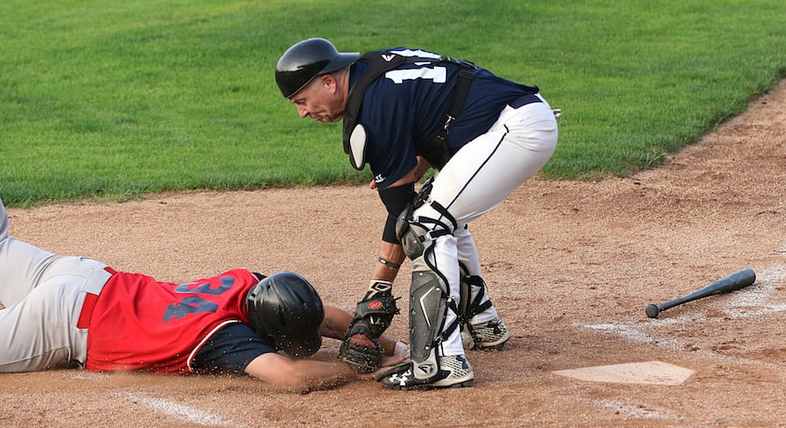When it comes to sports and safety, the topic of “Is baseball dangerous?” frequently arises. It’s a fair concern, considering the intensity and physicality of the game. However, clarifying some common baseball myths and providing light on the safety procedures in place is critical.
Baseball is not just deeply rooted in American history and culture, but it is also popular across the world. The sport brings together players, supporters, and families, generating a sense of camaraderie and enthusiasm from local leagues to professional stadiums. While injuries can occur in any sport, it’s crucial to understand that, with proper precautions and equipment, baseball is generally a safe and thrilling game.
In this blog post, we’ll address the myths and misconceptions surrounding the dangers of baseball. We’ll look at statistical data and safety precautions. Understanding the facts will give you a more realistic perspective on the sport’s safety and let you appreciate the game’s virtues.
Is Baseball a Dangerous Sport?
Baseball is naturally safe when practiced with adequate safety and equipment. While injuries may occur, they are less common than in contact sports. It is vital to clear up myths and clarify the safety precautions in place. Protective equipment, such as baseball gloves, dramatically minimizes hand injury risk. Warm-up activities, appropriate technique, fitness, and field safety knowledge contribute to player safety. Responsible coaching, sportsmanship promotion, and parental participation contribute to a healthy and safe atmosphere. Players of all ages can enjoy the game while limiting dangers by following these instructions.
Dispelling the Myths: Addressing Common Misconceptions
Misconceptions may frequently hide our judgment and lead to biased conclusions in sports. Baseball is no exception, with various beliefs about its safety persisting. Let’s take a deeper look at some common myths and disprove them.

Myth 1: Baseball is a violent sport
Baseball is not a violent sport, contrary to common opinion. While physical contact is possible during games, it is critical to distinguish between contact and collision sports. Baseball falls into the former category, where communication is typically intentional and part of the game’s strategy.
Baseball concentrates on the accuracy of throwing, hitting, and fielding, compared to sports focusing on physical confrontation, such as football or rugby. Players interact in a controlled environment where collisions are rare and generally unintentional rather than purposeful. Umpires and referees carefully watch the game to ensure fair play and penalize unsportsmanlike behavior.
Myth 2: Baseball causes severe injuries
While accidents can occur in any activity, statistical data suggests that baseball is not naturally dangerous as many other popular sports. Baseball, in reality, has lower injury rates on average when compared to contact sports like football and basketball.
Sprains, strains, fractures, and contusions are all common baseball injuries. These injuries are frequently caused by overuse, poor technique, or insufficient warm-up. However, good training, fitness, and adherence to safety standards can considerably decrease significant injuries.
Read: Can you catch a baseball with your bare hand?
Myth 3: Baseball is only dangerous at the professional level
Another common myth is that baseball becomes substantially more dangerous when players reach the professional level. However, this belief overlooks the comprehensive safety measures implemented across all game levels.
Baseball organizations prioritize player safety from little league to high school and beyond. Coaches must complete training and certification programs to teach proper techniques and enforce safety regulations. Umpires and officials actively supervise games to ensure rules are followed and avoid unnecessary dangers.
Safety Precautions and Training
In baseball, safety precautions and good training are essential in reducing the danger of injury. Warm-up exercises, technique, fitness, and field safety can help athletes improve their performance while highlighting their health.
Warm-up and stretching exercises
Warm-up exercises and stretching routines are essential for baseball players before they get onto the field. These activities promote blood flow, muscle relaxation, and joint flexibility. Warming up the body helps athletes avoid strains, sprains, and other common ailments.
Baseball players can benefit significantly from dynamic stretching, such as arm circles, leg swings, and torso twists. It increases the range of motion, improves muscular coordination, and prepares the body for the game’s specialized actions.
Proper Technique and Form
Developing and maintaining appropriate technique and form is critical for injury prevention in baseball. The right coaching should be provided to players to understand the proper pitching, hitting, fielding, and base running mechanics. Mastering the correct footwork, body placement, and throwing mechanics for each position is part of this.
Players may reduce pressure on their bodies, eliminate excessive movements, and increase their efficiency and effectiveness on the field by focusing on technique. Regular feedback and practice are essential for improving technique and preventing undesirable habits that can lead to injury.
Physical fitness and regular conditioning
Physical conditioning and fitness are essential in baseball for reducing injuries and improving overall performance. Regular strength training activities aid in developing muscle strength, endurance, and stability. It also protects joints and improves general body control.
Exercises that target the muscles utilized the most in baseball, such as the core, lower body, and upper body, should be the main emphasis of players. Exercises such as squats, lunges, push-ups, and medicine ball rotations can help improve general strength and stability.
Cardiovascular fitness is also vital for field endurance. Activities like running, cycling, or interval training can assist players in improving their cardiovascular fitness and sustaining their performance during the game.
Field Safety and Awareness of Weather Conditions
Baseball is frequently played outside, so players must be aware of weather conditions and field safety. Heat, thunderstorms, and damp field conditions can all enhance the risk of injury. To ensure the safety of the players, coaches and officials should regularly monitor weather forecasts and make educated judgments about game postponements or alterations.
Field safety is equally important. To ensure a safe playing environment, players should be mindful of any risks, like as uneven ground, holes, or debris, and report any concerns. The field should be properly maintained and inspected regularly to address possible dangers.
Read: Do baseball helmets expire?
Conclusion
Finally, baseball is safe and entertaining when practiced with proper precautions and equipment, not a dangerous sport at all. Despite common misconceptions, it is not a violent sport but emphasizes controlled interactions and strategy. Baseball has lower injury rates than contact sports, according to statistics. Safety precautions are taken at all game levels, and using protective equipment such as baseball gloves considerably minimizes the chance of injury.
Warm-up exercises, appropriate technique, regular fitness, and knowledge of weather conditions and field safety all contribute to increased player safety. Responsible coaching, sportsmanship promotion, and parental participation all help to create a happy and safe playing environment. By understanding the facts and embracing safety practices, players of all ages can enjoy the thrilling experience of baseball with minimized dangers. So take your glove, stroll onto the field, and enjoy the game while putting safety first.

